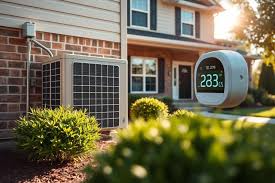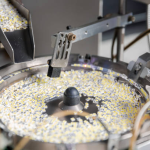Heating, ventilation, and air conditioning (HVAC) systems are crucial for maintaining a comfortable indoor environment throughout the year. Whether you’re dealing with cold winters or warm summers, an efficient HVAC system ensures that your home or workplace remains cozy and energy-efficient. However, simply having an HVAC system is not enough; proper maintenance and smart usage have a significant impact on its performance and longevity. We will explore practical and effective ways to maximize your HVAC system’s efficiency and comfort level, helping you save on energy bills while creating a healthier atmosphere indoors. These tips can make a meaningful difference regardless of the size or age of your system.
Practical Strategies to Enhance HVAC Performance and Comfort
Regular maintenance is the cornerstone of HVAC performance. Dust, debris, and worn-out parts can reduce efficiency and increase energy consumption. Scheduling routine maintenance can prevent breakdowns and keep your system running smoothly. This includes changing air filters every 1 to 3 months, which helps improve air quality and airflow. Clogged or dirty filters force the system to work harder, leading to higher energy bills and potential damage. Keeping coils clean also plays a vital role, as dirt buildup can hinder heat exchange, reducing the system’s ability to cool or heat your space properly. Regular inspections can identify leaks in ductwork that reduce airflow and cause uneven heating or cooling. For reliable service, call Sarkinen Heating and Cooling for HVAC in Vancouver to ensure your system receives the care it needs to perform optimally.
Thermostat settings have a surprisingly big impact on both comfort and energy use. Programmable thermostats enable you to adjust temperatures according to your daily schedule, thereby reducing energy consumption when no one is home. Setting the thermostat a few degrees higher in summer or lower in winter can lead to noticeable savings without sacrificing comfort. Additionally, using ceiling fans or portable fans can help circulate air more efficiently, thereby reducing the need for the HVAC system to operate constantly. Positioning your thermostat away from heat sources and direct sunlight ensures more accurate temperature readings, preventing unnecessary system operation.
Another useful approach involves enhancing your home’s insulation and sealing. Proper insulation reduces heat loss during winter and keeps hot air out during summer, easing the demand on your HVAC system. Sealing windows, doors, and any cracks in walls can prevent drafts that cause temperature fluctuations. Double-pane windows or energy-efficient window treatments also help maintain a stable indoor climate. Improving ventilation through exhaust fans in kitchens and bathrooms reduces moisture and stale air, which can affect indoor air quality and HVAC performance. Managing humidity levels is crucial, as excessive moisture can lead to mold growth and damage to HVAC components.
Energy-efficient upgrades can further improve your HVAC system’s performance. If your system is outdated, considering newer models with higher energy ratings might be worthwhile in the long run. Modern systems are designed to deliver better comfort while consuming less energy. Adding zoning systems enables you to control temperatures in different areas independently, thereby saving energy by heating or cooling only the occupied spaces. Regularly inspecting and maintaining your outdoor unit, including clearing debris and trimming vegetation around it, helps keep airflow unobstructed. Additionally, using energy-saving settings on your HVAC system during shoulder seasons—when the weather is mild—can optimize performance.
Understanding how your HVAC system works can also lead to smarter usage. Avoid overworking the system by closing vents in unused rooms, but do so cautiously, as it can affect overall airflow balance. Keep furniture or curtains away from vents and registers to allow air to flow freely. During extreme weather, layering clothing or adjusting your activities indoors can reduce reliance on heating or cooling. In winter, using window coverings at night can help retain heat, while opening them during the day allows sunlight to warm your home naturally. These simple habits complement your HVAC system’s efforts and improve overall comfort.
Sarkinen Heating and Cooling recommends maintaining clear communication with your service provider. Promptly addressing any irregular noises, odors, or temperature fluctuations helps catch issues early, before they escalate into costly repairs. Professional technicians can offer personalized advice based on your system and living conditions. Having a maintenance plan in place ensures regular checkups and prioritized service during peak seasons. Keeping records of repairs and maintenance supports better decision-making regarding system upgrades or replacements. These collaborative efforts between homeowners and service providers foster long-term system health and consistent indoor comfort.
Maintaining an efficient HVAC system requires a combination of regular upkeep, smart usage, and sometimes strategic upgrades. Paying attention to air filters, thermostat settings, insulation, and airflow ensures your system operates smoothly and effectively meets your comfort needs. Implementing these measures can lower energy consumption, reduce repair costs, and extend the lifespan of your HVAC equipment. With thoughtful care and timely maintenance, your HVAC system will continue to support a pleasant living or working space throughout every season.
READ MORE : Why Working with an LED Strip Lights Manufacturer Improves Your Supply Chain



